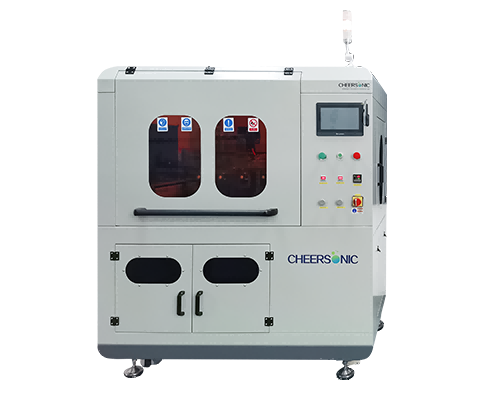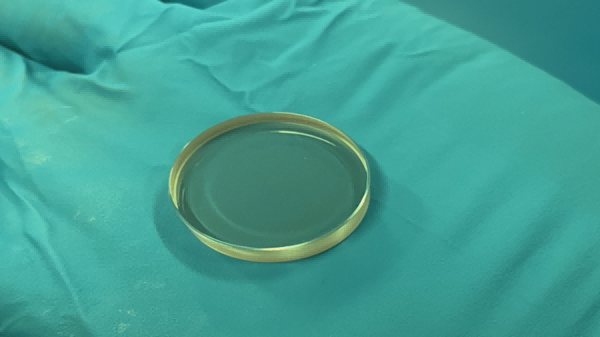Coating Photoresist on Glass Substrate
Innovative application of ultrasonic coating equipment for coating photoresist on glass
With the rapid development of micro nano manufacturing technology, photolithography plays a crucial role in fields such as semiconductors, optical devices, and microelectromechanical systems (MEMS). As the core material in photolithography, the uniformity, accuracy, and adhesion to the substrate of photoresist directly affect the performance and yield of the final product. In this context, ultrasonic coating equipment has shown great potential for coating photoresist on glass substrates with its unique advantages.
Ultrasonic coating technology is a high-tech that combines ultrasonic vibration and precision coating process. This technology utilizes the cavitation effect, microjet effect, and acoustic flow effect of ultrasound in liquid to refine liquid materials (such as photoresist) into tiny droplets under high-frequency vibration, and uniformly disperse them on the surface to be plated. Compared to traditional coating methods, ultrasonic coating technology can achieve higher precision coating control, significantly improving the uniformity and adhesion of coatings.
The challenge of coating photoresist on glass substrates
Glass, as a commonly used substrate material in photolithography technology, has the advantages of good transparency and high chemical stability, but at the same time, it also puts forward higher requirements for coating processes. On the one hand, photoresist needs to form a continuous, uniform, and defect free thin film on the glass surface to ensure precise transfer of photoresist patterns; On the other hand, the adhesion between photoresist and glass needs to be strong enough to prevent detachment or peeling in subsequent process steps.
Application advantages of ultrasonic coating equipment
- Improving coating uniformity: Ultrasonic coating equipment ensures a highly uniform coating of photoresist on glass surfaces by precisely controlling droplet size and distribution, which is crucial for improving the resolution and edge clarity of lithography patterns.
- Enhanced adhesion: Ultrasonic vibration helps photoresist molecules penetrate into the tiny pores on the glass surface, forming a mechanical locking effect, thereby enhancing the adhesion between photoresist and glass.
- Reduce defects: The cavitation effect of ultrasound can effectively remove bubbles and impurities during the coating process, reduce defects in the coating, and improve the yield and reliability of the product.
- Suitable for various types of photoresist: Ultrasonic coating equipment has good material compatibility and can be applied to different types of photoresist, including positive photoresist, negative photoresist, and advanced chemical amplification photoresist, meeting diverse application needs.
Application Cases and Prospects
At present, ultrasonic coating equipment has been successfully applied in the manufacturing of high-end optical devices such as optical filters, micro lens arrays, and biochips, effectively improving product performance and production efficiency. With the rapid development of technologies such as 5G communication, Internet of Things, and smart wearables, the demand for miniaturized and integrated optical components is increasing. The application prospects of ultrasonic coating technology for coating photoresist on glass will be even broader.
In the future, with the continuous advancement of ultrasonic coating technology, such as optimization of ultrasonic frequency, automation and intelligent control of coating process, it will further promote its deepening application in the field of photolithography technology, bringing revolutionary changes to semiconductor manufacturing, optical device development, and micro/nano manufacturing.
The innovative application of ultrasonic coating equipment in coating photoresist on glass not only solves many problems in traditional coating processes, but also provides strong technical support for the manufacturing of high-performance optical devices, and is a key force in promoting the development of emerging industries such as clean energy and information technology.
About Cheersonic
Cheersonic is the leading developer and manufacturer of ultrasonic coating systems for applying precise, thin film coatings to protect, strengthen or smooth surfaces on parts and components for the microelectronics/electronics, alternative energy, medical and industrial markets, including specialized glass applications in construction and automotive.
Our coating solutions are environmentally-friendly, efficient and highly reliable, and enable dramatic reductions in overspray, savings in raw material, water and energy usage and provide improved process repeatability, transfer efficiency, high uniformity and reduced emissions.
Chinese Website: Cheersonic Provides Professional Coating Solutions



